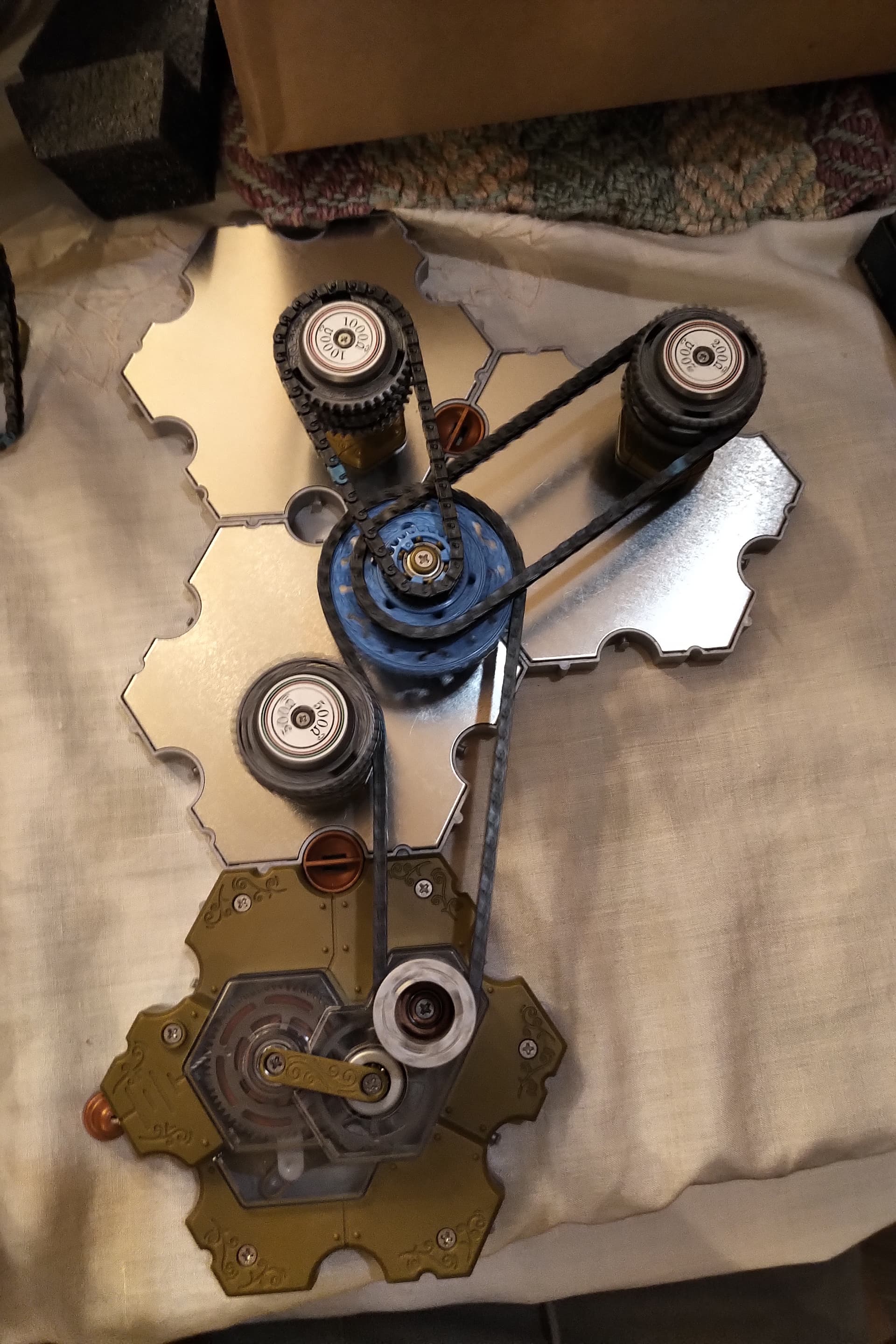I did not succeed at Challenge 51 on my own. In retrospect, it seems like I got the right structure, but missed the specific details of which resistors go where (and, also, played with a lot of structures that didn’t work).
You can actually play with this one by just building this and pushing on the resistor in the upper right to stop it:

Doing so, I noticed that, in particular, removing the resistor between the battery and the junction, or the resistor that is/would be attached to the button, the effect doesn’t occur.
If anyone wants to explain it in more detail, I’d be super interested, but my sense of how it works is this:
The battery produces some large number of units of rotational speed (I’m making this up to express my intuition, don’t judge). For purposes of assigning numbers, let’s say it produces 20 rotons.
Cranking the 1000 Ohm resistor at max speed needs at least 8 rotons, and doing so will pass 2 rotons on to the next thing in series, if any. The 500 Ohm resistor is 5 and 5, the 200 is 2 and 8.
So if you have just the battery, a junction, the 1000 and the 200, they both run at their max speed; stopping the 200 doesn’t make the 1000 go faster because it was already going as fast as it can, and vice versa.
If you put the 500 in the way before the junction, there’s only 5 rotons to split between the 200 and the 1000, so they both go pretty slow. If you stop the 200, all 5 rotons go to the 1000 and it noticeably speeds up (but still doesn’t reach its max speed).
Is that … loosely correct?
